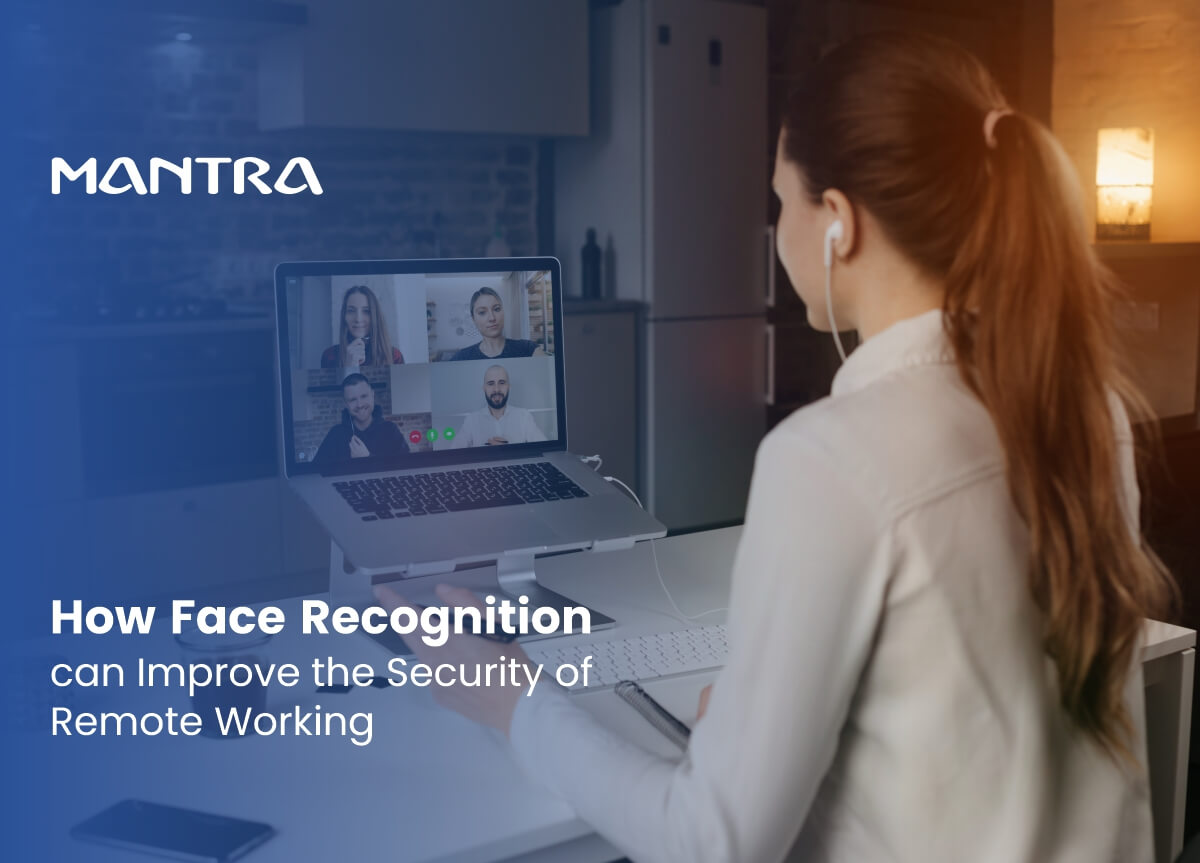
Remote working has become a common work arrangement for businesses of all sizes. While working remotely has many advantages, like higher productivity, lower costs, and a better work-life balance, there are also substantial security risks. Because hackers are always looking for methods to take advantage of remote teams, it is crucial that businesses take proactive steps to strengthen their security posture.
The development of face recognition-based biometric authentication technology has made it a potent tool for enhancing remote work security. The benefits and difficulties of establishing biometric authentication for remote working will all be covered in this article, along with how corporations may use biometrics to safeguard their remote workers.
Understanding the Risks of Remote Work
Unique security risks that do not exist in regular office settings are introduced by remote work. When working remotely, employees could use personal devices or open Wi-Fi networks, both of which are susceptible to security risks. Cybercriminals might use malware, ransomware, or phishing assaults to steal confidential information or obtain illegal access to company networks.
Moreover, in order to access corporate resources, remote teams frequently need usernames and passwords, which are vulnerable to hacking, guesswork, and phishing. Hackers may find it simple to get access to company accounts and steal critical data if the passwords are weak or frequently used.
How can Face Recognition be used for Remote Work?
Biometric technology is one of the best risk management techniques for businesses to stop security breaches. Biometrics not only reduces the chance of a security breach but also increases employee productivity by allowing employees to work safely and on time. The new trend of remote or hybrid work can increase employee loyalty, retention, and overall job satisfaction, especially for people with specific physical or mental health needs. However, the security aspect of remote work is important, and that can be enhanced with face recognition-based biometric authentication, which allows business applications to authenticate the identity of remote workers with the help of laptops, desktop cameras, and even mobile cameras.
The remote employees who have been authorized by the business's systems can be successfully authenticated by the facial recognition API embedded in attendance monitoring, time tracking, or any other security application. Such systems can also be embedded with location services to locate the employee while authenticating for remote work as well as onsite services and onsite customer support.
Different Ways Biometric Authentication can be Used
Remote workers mostly depend on cloud-based applications, virtual meetings, and file-sharing platforms, which may increase the risk of data breaches and cyberattacks. By offering convenient and safe authentication for remote workers, face recognition can help reduce these risks. For that, this biometric technology can be used as an additional layer of security (Multi-Factor Authentication) or for applications like time and attendance, and access control, but how? Read on for more.
Multi-Factor Authentication (MFA)
MFA is actually a security strategy that asks users to provide two or more authentication factors, such as a password and a face scan, in order to access a system or application. MFA adds an additional layer of security to access company data and resources, and the risk of any unauthorized access can be greatly decreased. Businesses can make sure that only their authorized people working remotely have access to critical information by employing biometric authentication as one of the considerations.
Time and Attendance Tracking
For remote workers, keeping track of employees' time and attendance can be difficult. For remote workers, conventional approaches like time cards and punch clocks are unsuitable. This issue can be solved by biometric time and attendance tracking systems, which use facial recognition or fingerprint scanning to authenticate employee identities and accurately record their working hours.
Access Control
Access to numerous corporate resources, including servers, databases, and apps, is essential for remote teams. Giving unauthorized people access, however, may compromise the security of these resources, and the risk of this is high in remote working. Biometric access control solutions can help ensure that only authorized individuals can access sensitive company information.
Benefits of Biometric Authentication for Remote Working
Implementing biometric authentication for remote work can offer numerous benefits to remote teams, including:
Increased Security
Biometric authentication is more secure than traditional authentication methods because it is difficult to forge or steal biometric data. Now most laptops and desktop cameras feature liveness detection that ensures the actual person is authenticating with the system. Biometric authentication can help prevent unauthorized access, data breaches, and cyberattacks.
Convenience
Face recognition authentication is more convenient than traditional authentication methods because it does not require individuals to remember passwords or carry tokens or smart cards. Additionally, the employee just needs to show their face to the camera to authenticate with the system. Overall, it can speed up the authentication process, reducing frustration and delays.
Cost-Effective
Biometric authentication can be cost-effective in the long run because it can reduce the time spent sharing an important document with a remote team by quickly ensuring the authorization of individuals. It eliminates the need for costly security measures like keycards, which can be easily lost or stolen.
Conclusion
Enterprise system security in remote working situations involves a variety of challenges, but biometric face recognition technology is proving to be a practical solution. It can increase employee productivity and satisfaction and is a distinctive and secure way to safeguard critical information. Technology is anticipated to grow even more sophisticated and secure as technology develops, making it a more crucial tool for businesses to protect their systems and data.
Comments